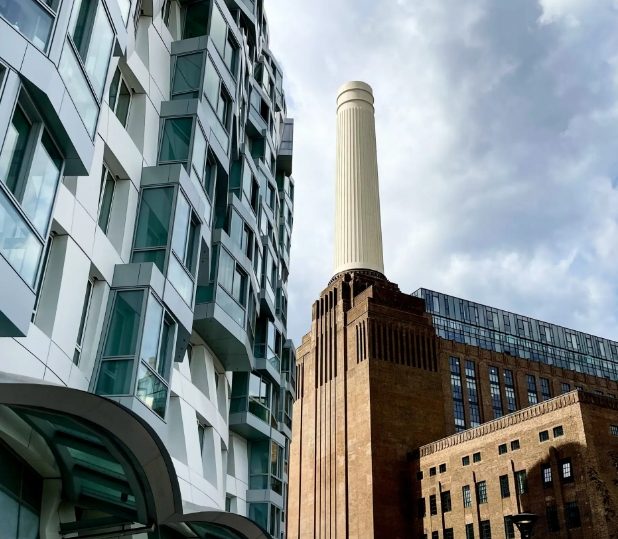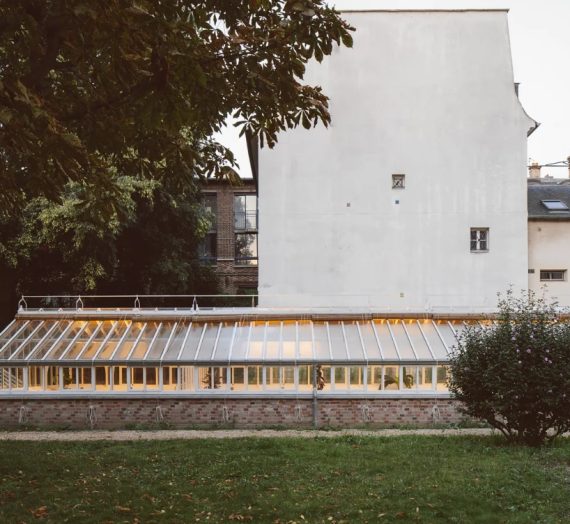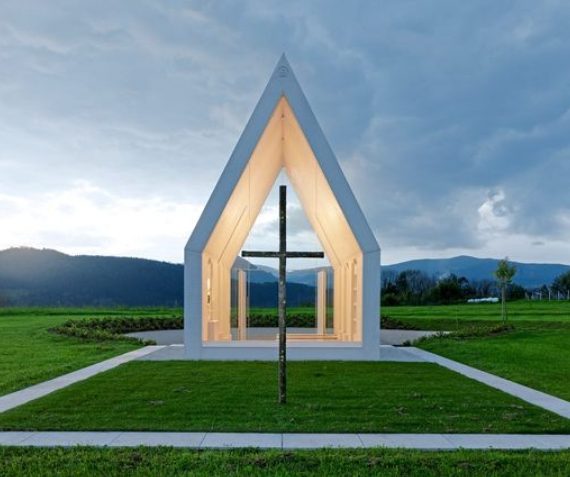This selection takes into account not only new buildings, but also outdated and iconic architectures, which in some cases no longer exist except in our memory. Among the projects that have left their mark we find numerous restorations and redevelopments, an indication that adaptive reuse, a responsible tool that looks to a sustainable future and is able to improve the condition of places while preserving their memory, is increasingly widespread.
The Procuratie Vecchie by David Chipperfield in Venice and the Battersea Power Station by Wilkinson Eyre in London therefore stand out, although the very recent Eataly Art House Verona by Mario Botta also deserves a mention.
As for the new, many (many) skyscrapers and residential complexes follow, some of which are also the first buildings completed by famous studios in a particular country. For example, the skyscrapers of OMA and Alvaro Siza in New York, the residences of Frank Gehry in London, the BIG tower in South America.
There are also tributes to Pritzker prize winner Francis Kéré, to Ricardo Bofill – who recently passed away – whose very famous Muralla Roja in Calpe (Alicante) inspired the Korean series Squid Game, and finally to Kurokawa’s Nakagin Capsule Tower, sadly demolished this very year, although many of his capsules survive here and there, around the world.
2022 was therefore a year full of events, marked by splendid buildings finally completed after a long period of pandemic, and extremely significant also from a symbolic point of view. These include the recently inaugurated World Trade Center Church by Santiago Calatrava, the successes of Bjarke Ingels Group (from the Sluishuis floating condominium to the biophilic skyscraper Capitaspring), the LSE Marshall Building by Grafton Architects, the Royal College of Art Battersea by Herzog and De Meuron in London, and many others.
The World Trade Center Church
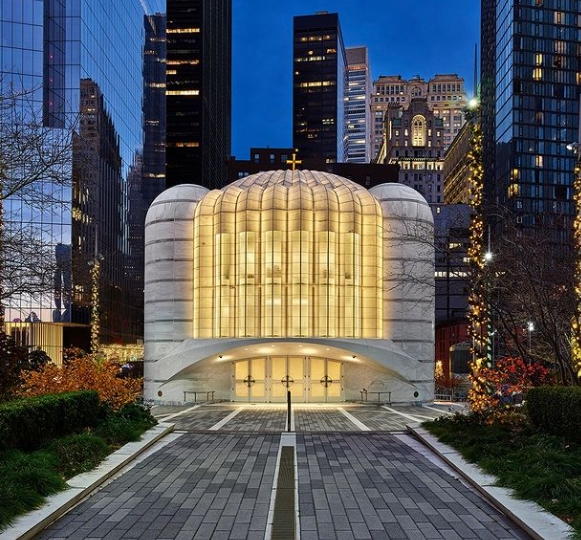
Recently inaugurated in New York, the Greek Orthodox church of San Nicola is the second work created by Santiago Calatrava on the World Trade Center site in New York (it follows the WTC Transportation Hub opened in 2016) and is the first religious building built by the architect.
The work, conceived as a sanctuary and place of symbolic worship, replaces the old church destroyed during the terrorist attacks of 11 September 2001. It is characterized by a central cross-shaped structure with a Pentelic marble casing and a dome in stratified glass and stone. The church is a “lantern of hope” inspired by Byzantine architecture, especially Hagia Sophia.
The Procuratie Vecchie
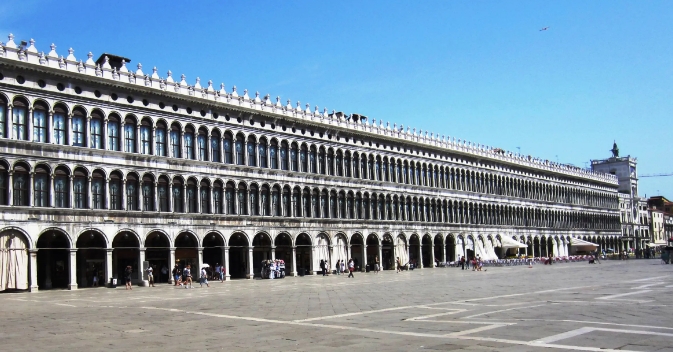
The Procuratie Vecchie in Piazza San Marco in Venice reopen to the public after 500 years thanks to the restoration completed in five years by the Milanese office of David Chipperfield Architects. A delicate project that has brought the 12,400 square meters on three floors of the historic building back to life, respecting tradition.
The building, which extends from the Clock Tower to the Correr museum, hosts exhibition areas, interactive itineraries and spaces dedicated to refreshment and reading. It is also the home of The Human Safety Net, the foundation created by the insurance giant and owner of the property, the Generali Group.
The LSE Marshall Building
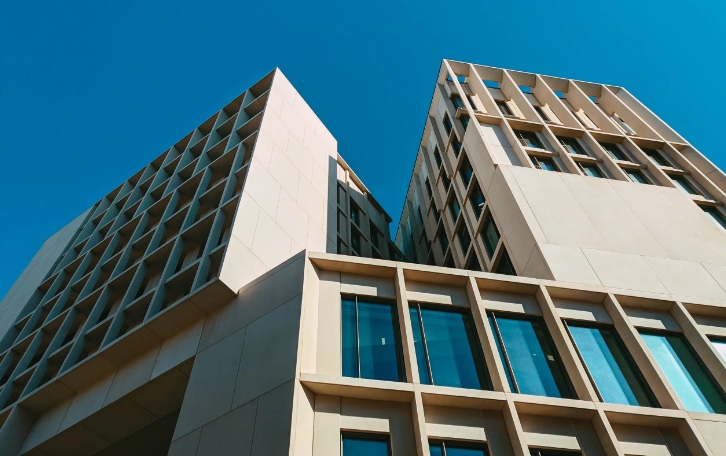
2022 is the year of the inauguration of the Marshall Building, the new prestigious headquarters of the London School of Economics (LSE).
The building designed by Grafton Architects, an award-winning firm led by Yvonne Farrell and Shelley McNamara and which boasts some experience in the field of university complexes, is characterized by a particular facade punctuated by vertical elements. Inside, however, a sinuous helical staircase and branched concrete pillars stand out.
La Muralla Roja
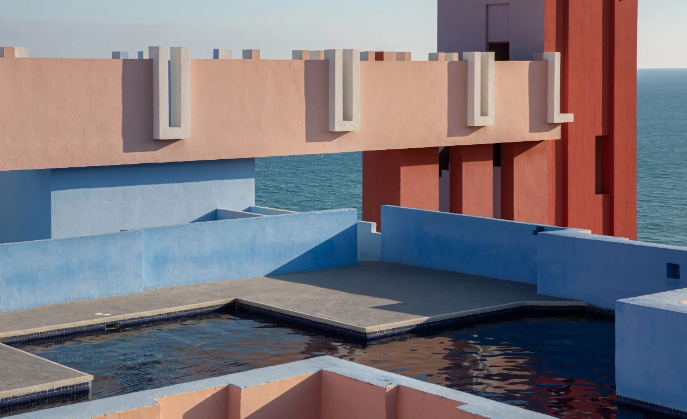
On January 14, 2022, Ricardo Bofill, a Spanish architect considered one of the greatest representatives of postmodernism, died.
Among his architectures we remember in particular the Muralla Roja: an iconic apartment complex, although dating back to 1968, which became “popular” again in 2022 also thanks to the controversial Korean series Squid Game.
The architecture of the “fortress-prison”, characterized by labyrinthine staircases, bright colors and arches, is inspired by Bofill’s masterpiece in Alicante, within which it is now possible to stay by booking on Airbnb.
The Eagle + West Towers in Brooklyn
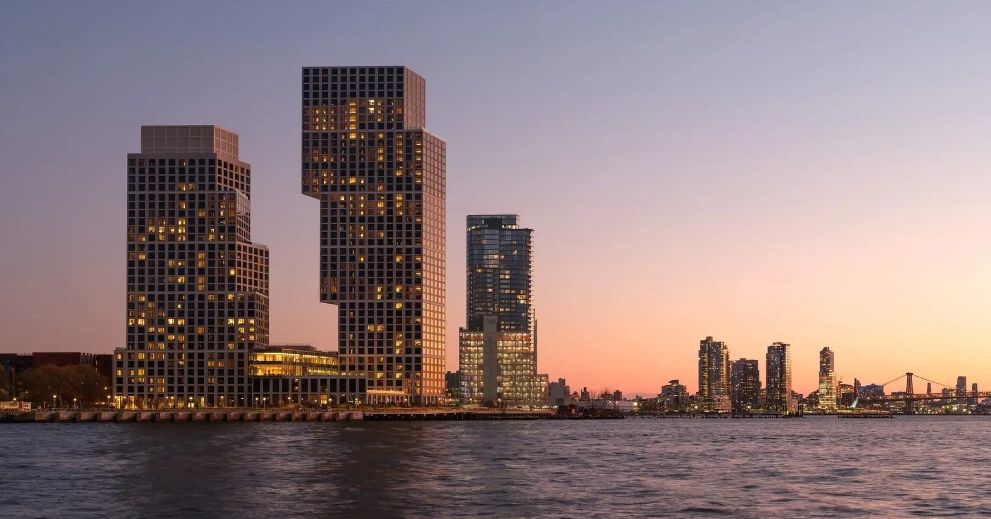
OMA New York with the coordination of partner Jason Long, completed the Eagle + West mixed-use complex in Brooklyn. It is the first skyscraper designed by the studio in the Big Apple and is also an integral part of the important Greenpoint Landing redevelopment project.
The architecture is characterized by two complementary stepped towers, clad with prefabricated concrete panels.
The individual blocks, which appear to be stacked, are oriented according to the path of the sun and rest on a connecting base element which houses green spaces, relaxation areas and common services.
The Nakagin Capsule Tower
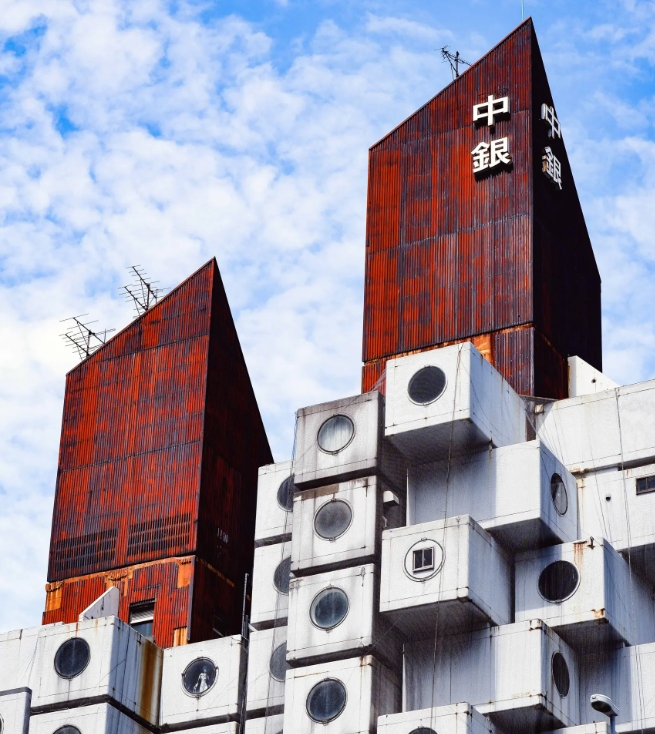
2022 is the year of the demolition of the Nakagin Capsule Tower by Kisho Kurokawa: a symbolic building of Japanese metabolist architecture, as well as the first example in the world of the serial application of a housing capsule.
Dating back to 1972 and for years at the mercy of decay, the tower consisted of a reinforced concrete load-bearing structure on which 140 prefabricated modules with a characteristic porthole window were hooked.
Many units escaped demolition: if one is already on display in the gardens adjacent to the Saitama Museum of Modern Art (also designed by Kurokawa), others have been restored and can already be rented on Airbnb.
Also through the famous platform, it is possible to book a stay at the Capsule House K in Nagano, a country residence that Kurokawa built for himself in the same years as the Nakagin Capsule Tower.
The pavilions of Francis Kere
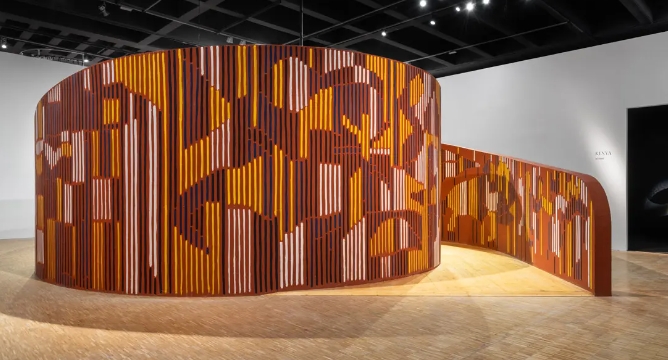
2022 is undoubtedly the year of Diébédo Francis Kéré. Brilliant Bukinabé architect, winner of the Pritzker Architecture Prize, has been able to improve through his buildings (mainly schools, health facilities and housing) and an intelligent use of local materials, the life of the inhabitants in an often forgotten region of the world.
We also find Kéré at the Triennale, in the role of main curator with Ersilia Vaudo of the 23rd International Exhibition Unknown Unknowns. An Introduction to Mysteries.
Six pavilions built by African countries, while among the works presented, Yesterday’s Tomorrow stands out: a circular structure painted using the patterns of the vernacular architecture typical of Burkina Faso.
The Sluishuis floating condominium
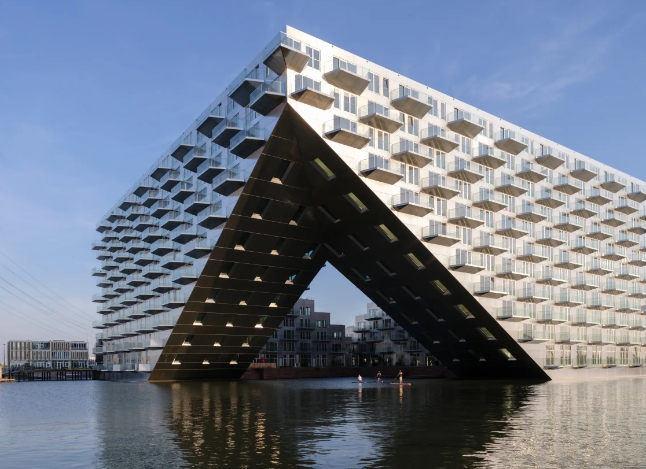
From Sluishuis, a floating condominium in Amsterdam, to biophilic skyscrapers such as Capitaspring in Singapore and the very recent Iqon in Quito in Ecuador (the first complex built by the studio in South America), passing through luxury hotels in Switzerland and tree houses in Lapland: Bjarke Ingels Group “takes home” numerous architectures over the course of this prolific 2022.
Difficult to say which is the building of the year, it is certain that the values of the studio, which have always focused on livability, inclusive socio-economic development, and environmental sustainability, are becoming stronger, project after project.
Alvaro Siza’s skyscraper in New York
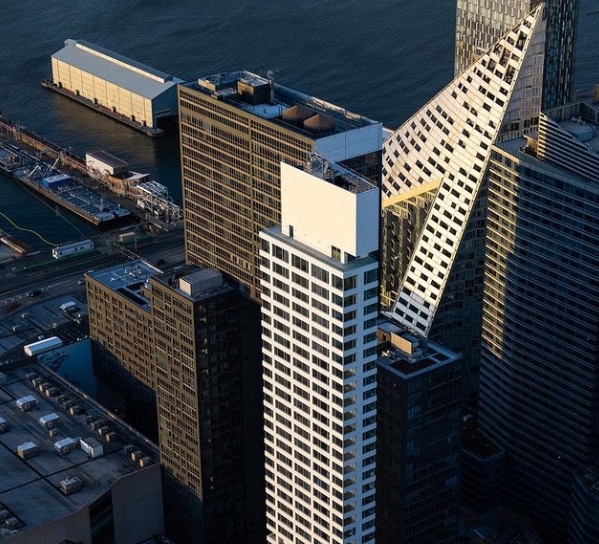
The first architecture signed by the Portuguese master Alvaro Siza in the United States is 611 West 56th Street: a residential tower of 77 homes, clad in bright white limestone. The sculptural building is thin and slender, although not excessively tall (137 meters), and inside it boasts interiors designed by Gabellini Sheppard. It is located on the Upper West Side, between Riverside Park and Central Park, a stone’s throw from Via 57 West: the residential complex, branded BIG, whose particular triangular structure is located halfway between the more traditional skyscraper and the courtyard.
The Vertical Panorama Pavilion
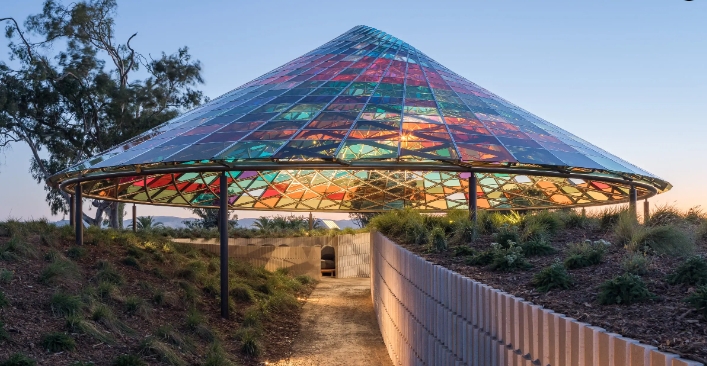
The Vertical Panorama Pavilion, a pavilion with glass panels in 24 colors designed by Studio Other Spaces (Olafur Eliasson and Sebastian Behmann) for The Donum Estate, has been around the world.
This great kaleidoscope that embraces the passion for art and wine is rightfully among the most significant projects of the year.
Inspired by a circular calendar, the multicolored roof is closely linked to the place: the stripes trace the annual averages of the meteorological parameters that make the wine produced from the land of the estate the best Pinot noir in California.
Battersea Power Station
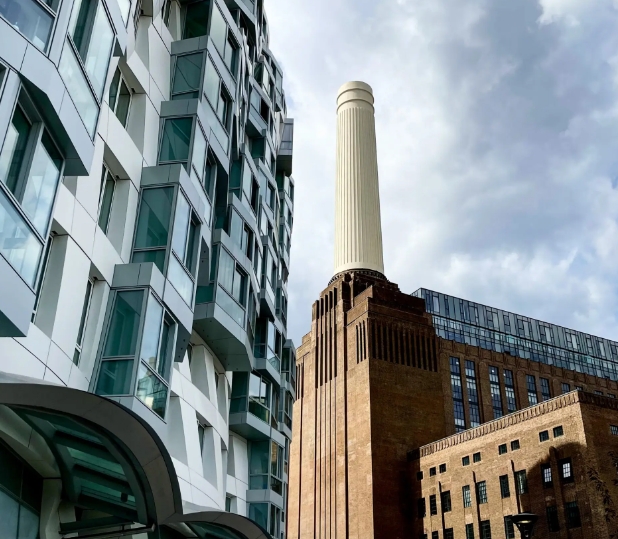
Eight years after the start of the restoration work conducted by Wilkinson Eyre, London’s Battersea Power Station reopens as a multipurpose centre, and together with the former thermoelectric plant, the surrounding area is also reborn.
An important stage in the urban redevelopment is marked by the inaugurations of Prospect Place, the first residential building designed by Frank Gehry Partners in the UK, and of the Art’otel London Battersea Power Station by Foster & Partners, a hotel belonging to the complex of offices, shops, bars and restaurants that the studio is completing.
Both overlook Electric Boulevard: a pedestrian street connected to the new Battersea Power Station Zone 1 underground station.
The Royal College of Art Battersea
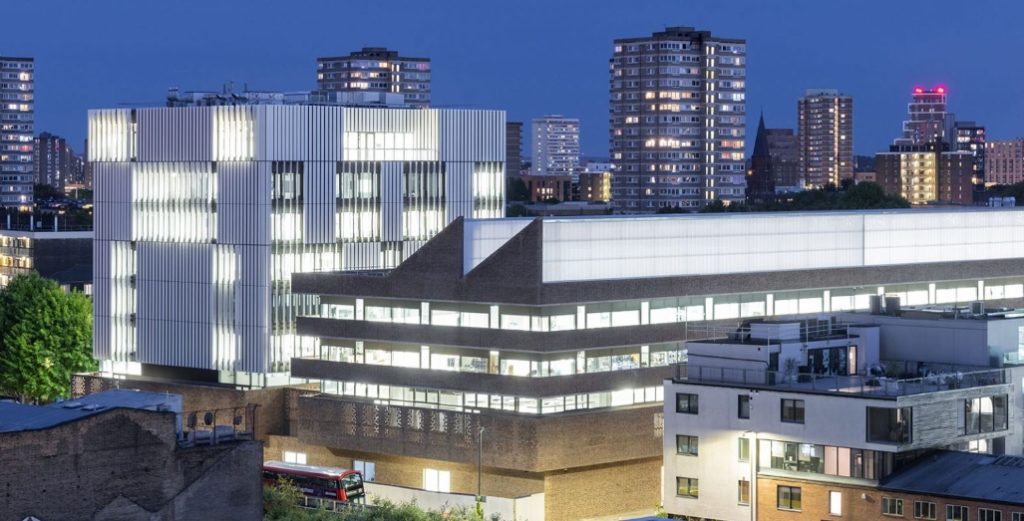
Herzog & De Meuron also created a work in the Battersea district of London, ten minutes from the former factory.
The new campus of the Royal College of Art (RCA Battersea) is located within the pre-existing Creative Quarter and includes four floors for studios and laboratories, two hangars (one multifunctional of 350 m2 and a second, smaller one dedicated to robotics) and the Rausing Research & Innovation Building (eight-story block dedicated to research).
If the interiors were made of steel and concrete, the facades stand out for their industrial character and for the prevalent use of raw brick, sometimes perforated to naturally ventilate some rooms.

